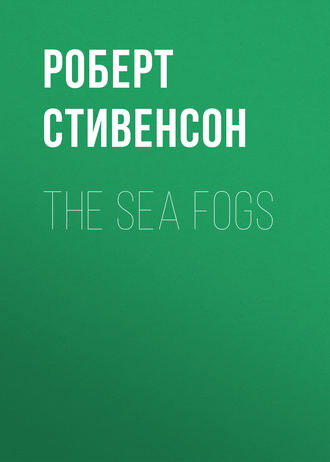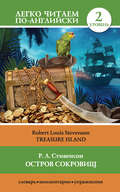
Роберт Льюис Стивенсон
The Sea Fogs
Introduction
Robert Louis Stevenson first came to California in 1879 for the purpose of getting married. The things that delayed his marriage are sufficiently set forth in his "Letters" (edited by Sidney Colvin) and in his "Life" (written by Graham Balfour). It is here necessary to refer only to the last of the obstacles, the breaking down of his health. It is in connection with the evil thing that came to him at this time that he first makes mention of "the sea fogs," that beset a large part of the California coast. He speaks of them as poisonous; and poisonous they are to any one who is afflicted with pulmonary weakness, but bracing and glorious to others. They give the charm of climate to dwellers around the great bay. How he took this first very serious attack of the terrible malady is indicated in the letter to Edmund Gosse, dated April 16, 1880. His attitude toward death is shown here, and is further shown in his little paper AEs Triplex, in which he successfully vindicates his generation from the charge of cowardice in the face of death. Stevenson's two distinguishing characteristics were his courage and his determination to be happy as the right way of making other people happy. His courage, far more than change of scene and climate, gave him fourteen more years in which to contribute to the sweetness and light of the world. These years were made fruitful to others by his determined happiness, a happiness in which the main factor, outside of his own determination, came from the companionship which his marriage brought to him. The great principles by which he lived influenced those who did not know him personally, through his gift of writing. He always maintained that it was not a gift but an achievement, and that any one could write as well as he by taking as much pains. We may well doubt the soundness of this theory, but we cannot doubt the spiritual attitude from which it came. It came from no mock humility, but from a feeling that nothing was creditable to him except what he did. He asked no credit for the talents committed to his charge. He asked credit only for the use be made of the talents.
Stevenson was married May 19, 1880. His health, which had delayed the marriage, determined the character of the honeymoon. He must get away from the coast and its fogs. His honeymoon experiences are recorded in one of the most delightful of his minor writings, "The Silverado Squatters." He went, with his wife, his stepson and a dog, to squat on the eastern shoulder of Mount Saint Helena, a noble mountain which closes and dominates the Napa Valley, a wonderful and fertile valley, running northward from the bay of San Francisco. Silverado was a deserted mining-camp. Stevenson has intimated that there are more ruined cities in California than in the land of Bashan, and in one of these he took up his residence for about two months, "camping" in the deserted quarters of the extinct mining company. Had he gone a little beyond the toll-house, just over the shoulder of the mountain, he would probably never have seen the glory of "the sea fogs." It would have been better for his health but worse for English literature.
My first knowledge of that glory came to me twenty years ago. I had come to California to care for one dearly beloved by me, who was fighting the same fight that Stevenson fought, and against the same enemy, and who was fighting it just as bravely. I took him to the summit of the Santa Cruz Mountains in the hope that we might escape the fogs. As I watched on the porch of the little cottage where he lay, I saw night after night what I believe to be the most beautiful of all natural phenomena, the sea fog of the Pacific, seen from above. Under the full moon, or under the early sun which slowly withers it away, the great silver sea with its dark islands of redwood seemed to me the most wonderful of things. With my wonder and delight, perhaps making them more poignant, was the fear lest the glory should mount too high, and lay its attractive hand on my beloved. The fog has been dear to me ever since. I have often grumbled at it when I was in it or under it, but when I have seen it from above, that first thrill of wonder and delight has come back to me – always. Whether on the Berkeley hills I see its irresistible columns moving through the Golden Gate across the bay to take possession of the land, or whether I stand on the height of Tamalpais and look at the white, tangled flood below, —







